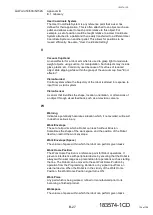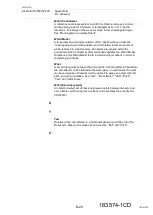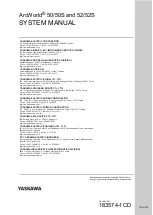
B-14
183574-1CD
183574-1CD
Appendix B
B.1 Glossary
ArcWorld 50/50S/52/52S
Linear Interpolated Motion
Is a method of path interpolation that commands the movement of the
robot by moving each joint in a coordinated motion so that all axis arrive to
the position at the same time. The path of the Tool Control Point (TCP) is
predictable and will be linear.
Linear Motion Type
Is a method of path interpolation that commands the movement of the
robot by moving each joint in a coordinated motion so that all axis arrive to
the position at the same time. The path of the Tool Control Point (TCP) is
predictable and will be linear.
Link
A rigid part of a Robot, which connects adjacent joints.
Links
The static material, which connects the joints of an arm together. Thereby
a kinematical chain is formed. In a human body, the links are the bones.
Load Cycle Time
A manufacturing or assembly line process term, which describes the
complete time to unload the last work piece and load the next one.
M
Magnetic Detectors
Robot sensors that can sense the presence of ferromagnetic material.
Solid-state detectors with appropriate amplification and processing can
locate a metal object to a high degree of precision. See
Manipulator
A machine or robotic mechanism of which usually consists of a series of
segments (jointed or sliding relative to one another) for the purpose of
grasping and/or moving objects (pieces or tools), usually in several
degrees of freedom. The control of the Robot may be by an operator, a
Controller or any logic system (for example cam device, wired, etc.) (ISO
and
Manual Mode
See
Material Handling
The process by which an industrial robotic arm transfers materials from
one place to another.
Material Processing Robot
A robot designed and programmed so that it can machine, cut, form or
change the shape, function or properties of materials it handles between
the time the materials are first grasped and the time they are released in a
manufacturing process.
111 of 126
















































